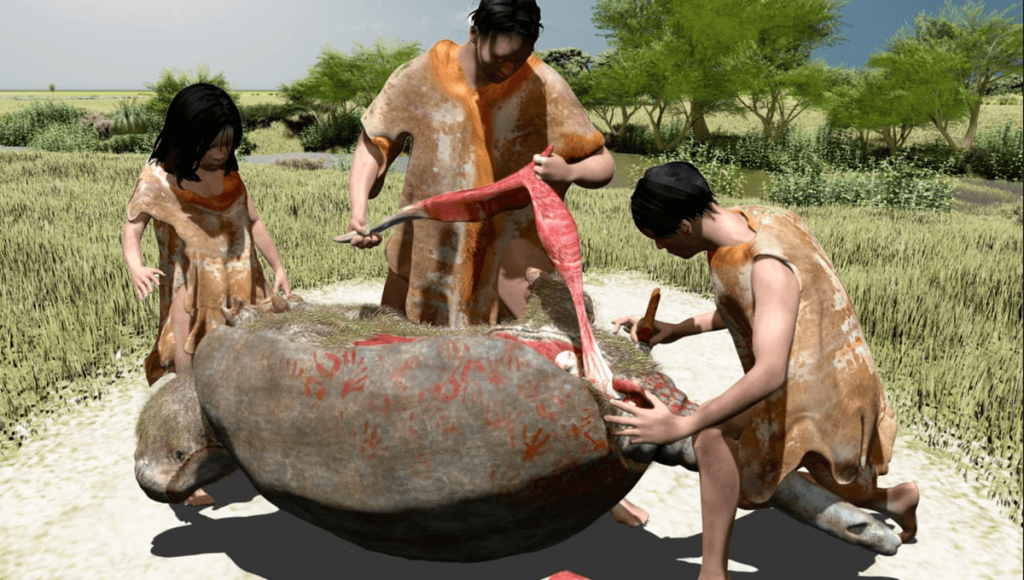The dismembered remains of a giant armadillo suggest that humans were present in South America much earlier than previously thought. Dating back about 21,000 years, the dismembered remains are also some of the oldest archaeological evidence of human habitation on the continent.
The fossilized bones were found on the banks of the Reconquista River in the northeast of what is now the Pampean region of Argentina. They belong to the glyptodont family, a giant extinct relative of the armadillo. Neosclerocalyptus They can grow up to 2 meters (6.5 feet) in length, which apparently makes for a hearty meal.
Archaeologists from the National University of La Plata found distinctive cut marks around the pelvis, tail and armour made by cutting with stone tools.
The Americas were once rich in large, now extinct animals. These included: Giant Ground Sloth And giant llamas: there’s plenty of evidence that prehistoric humans hunted these giant beasts, raising the idea that overhunting may have caused their extinction (typical human, huh?).
Drawing of Neosclerocalyptus Skeleton with cut-marked skeletal elements found on the specimen highlighted in light blue.
New Date Neosclerocalyptus Remains – dating from 21,090 to 20,811 years ago – is particularly important because in recent decades there has been much debate about when humans accomplished the enormous task of migrating from Eurasia to the Americas.
Conservative estimates place the first humans inhabiting the Americas at least 16,000 years ago, but a series of recent studies has pushed this date back further. One of the most surprising pieces of evidence is Human footprint in new mexico The carvings were made between 23,000 and 21,000 years ago. Some archaeologists dispute this claim, but later This was confirmed by another study.
Recently discovered butchered armadillos confirm that the first humans arrived in the Americas well before 16,000 years ago, and evidence indicates that humans arrived in southern South America much earlier than that.
The current consensus is that humans first set foot on the Americas after migrating from Siberia into what is now Alaska. Across the Bering Straitis a land bridge that existed during the last ice age when sea levels were significantly lower. Over the course of several thousand years, probably in multiple migration waves, some of these groups began to move further south, eventually settling as far south as southern South America, thousands of kilometers from Beringia.
Archaeologists and anthropologists are still piecing together this epic story, but recent discoveries of evidence of the massacre along the Reconquista River are sure to add new fuel to the debate.
“The evidence from this study calls into question the timing framework for the first human settlement of the Americas 16,000 years ago,” said corresponding author Miguel Delgado. statement.
The new study is published in the journal ProSone.


